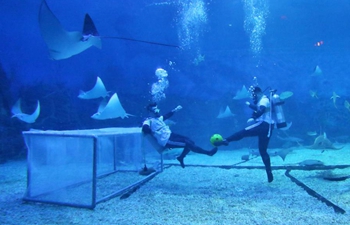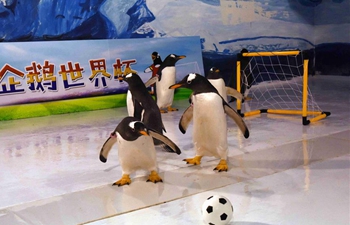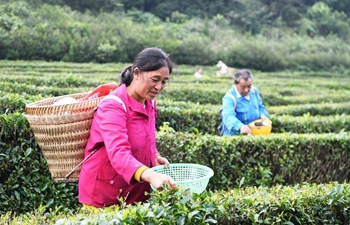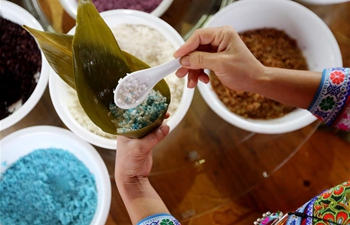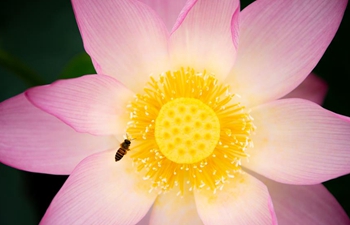WASHINGTON, June 14 (Xinhua) -- British and German researchers described in a study published on Thursday in the journal Current Biology the first and unexpected microbes that could translate DNA randomly in two different ways.
Researchers examined an unusual group of yeasts and were surprised to find one species, Ascoidea asiatica, randomly translated a codon either as serine or leucine, two different kinds of protein. Every time the codon is translated, the cell tosses a chemical coin: heads for leucine, tails it's serine.
DNA is often referred to as the blueprint for life, since all organisms receive genetic information from their parents which tell the cells how to make proteins.
The genetic information comprises DNA molecules made up of a sequence of four chemical bases represented by the letters A, T, C and G. The genetic code dictates to the cell which sequence of amino acids to join together to form each protein given the underlying sequence in the DNA.
"We were surprised to find that about 50 percent of the time that CTG is translated as serine, the remainder of the time it is leucine," said Laurence Hurst, professor of Evolutionary Genetics and director of the Milner Centre for Evolution at the University of Bath.
"The last rule of genetics codes, that translation is deterministic, has been broken. This makes this genome unique. You cannot work out the proteins if you know the DNA," said Hurst.
The research team investigated molecules called tRNAs, which act as translators that recognize the codons and bring together the amino acids to make a protein chain.
Martin Kollmar, from the Max-Planck Institute for Biophysical Chemistry in Gottingen, said: "We found that Ascoidea asiatica is unusual in having two sorts of tRNAs for CTG, one which bridges with leucine and one which bridges with serine."
"So when CTG comes to be translated, it randomly picks one of the two tRNAs and hence randomly picks between serine and leucine," said Kollmar.
Stefanie Muhlhausen from The Milner Centre for Evolution at the University of Bath said: "Swapping a serine for leucine could cause serious problems in a protein as they have quite different properties."
"Serine is often found on the surface of the protein whereas leucine is hydrophobic and often buried inside the protein," said Muhlhausen. "We looked at how this strange yeast copes with this randomness and found that A. asiatica has evolved to use the CTG codon very rarely and especially avoids key parts of proteins."
The researchers estimated that the random encoding was 100 million years old, but other closely related species evolved to lose this potentially problematic trait.
"It's unclear why A. asiatica should have retained this stochastic encoding for so long. Perhaps there are rare occasions when this sort of randomness can be beneficial," said Kollmar.





